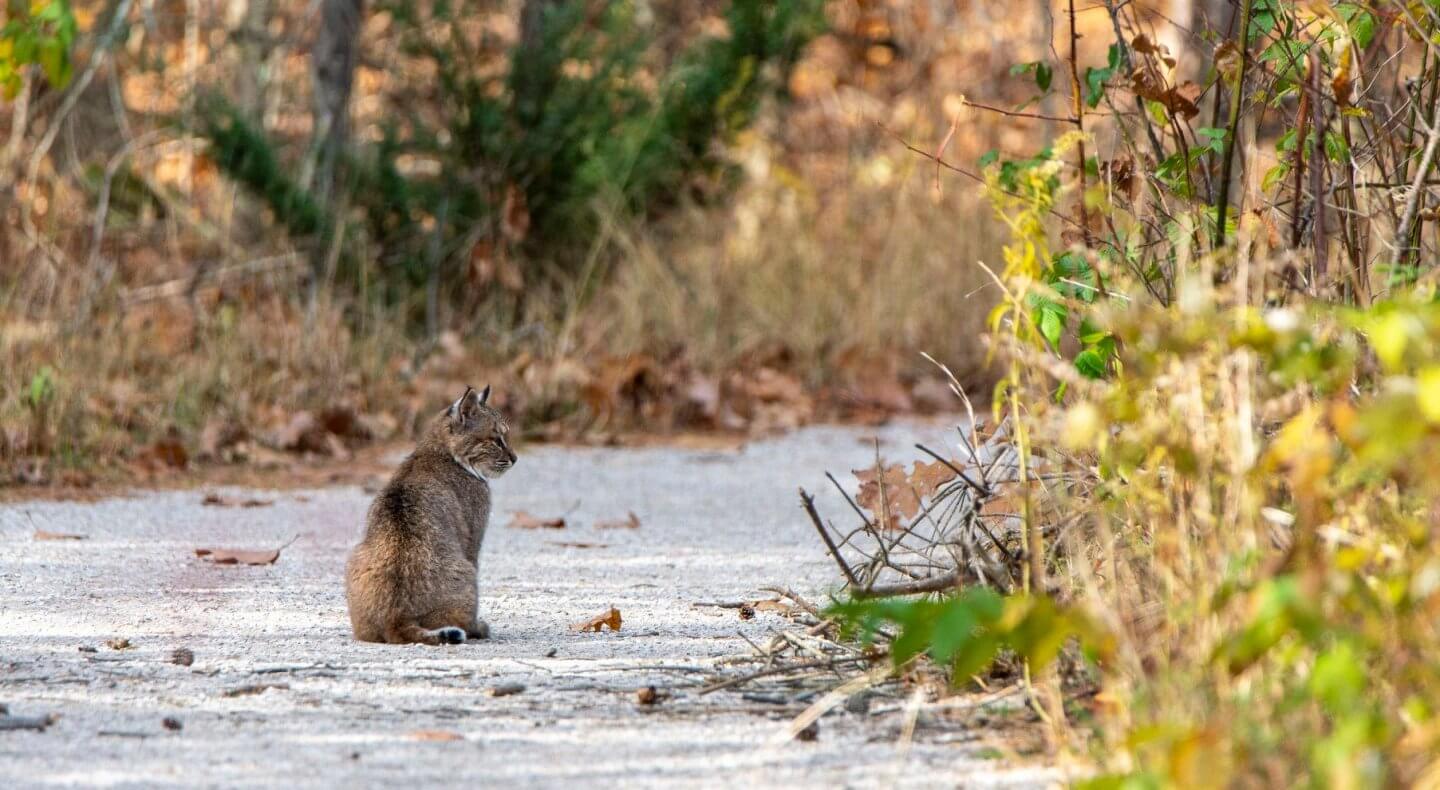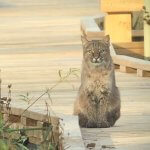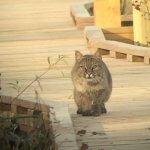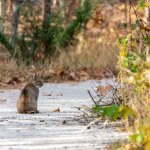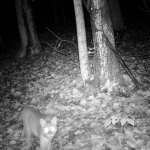Bobcat
November 10, 2022Despite being known as the most abundant wild cat in the U.S., bobcats are elusive, solitary creatures that aren’t often seen. Their range includes the northern two-thirds of the state, where they spend their time hunting small game such as rabbits, birds, mice and squirrels. These feline predators are roughly twice the size of a house cat, weighing anywhere from 11 to 30lbs. Their fur color varies from brownish red to mostly brown with a white underbelly. Of course, their most distinctive physical feature is their namesake “bobbed” tail.
Being nocturnal hunters, bobcats often go unseen by humans. However, we know they roam the woods by the tracks they leave in fresh snow or muddy areas, the occasional daytime sighting, or a cameo appearance on wildlife cameras. (It should be noted that GTRLC uses cameras for wildlife study but they are not otherwise permitted on GTRLC preserves).
If they pass by a wildlife camera at night, their eyes reflect the low-light infrared flash from the camera, triggering one of the brightest eyeshines of all mammals.
Eyeshine is caused by a special membrane called the tapetum lucidum (“Tapestry of Light”), which is a reflective membrane located directly behind the eye’s retina. Generally speaking, the eyes of most mammals work by light passing into the retina, where photoreceptors send messages to the brain to create images that we see. If an animal has the tapetum lucidum membrane, light that initially passes over the retina hits the membrane and reflects back across the photoreceptors, adding more light and creating a clearer image in low-light situations.
The tapetum lucidum membrane is what gives bobcats and many nocturnal mammals their impressive night vision. But eyeshine isn’t just for mammals, it’s found in a wide range of animals that operate in low light, including spiders, owls, alligators, and even some fish like Walleye!
(The bobcat pictured at night was seen at Lower Woodcock Lake Nature Preserve. The camera is situated on a deer trail along a small ridge that runs parallel with the Platte River, where the cat could see any movement below the ridge and to the river – perfect for hunting!)
(photos by Brian Allen, Jon Alexander and Cody Selewski)
- Bobcat at Arcadia Marsh. Photo by Brian Allen
- Bobcat at Arcadia Marsh. Photo by Brian Allen
- Bobcat on the Overlook Trail at Arcadia Dunes. Photo by Jon Alexander
- Bobcat captured by GTRLC wildlife camera at Lower Woodcock Lake
Categorised in: Field Notes
